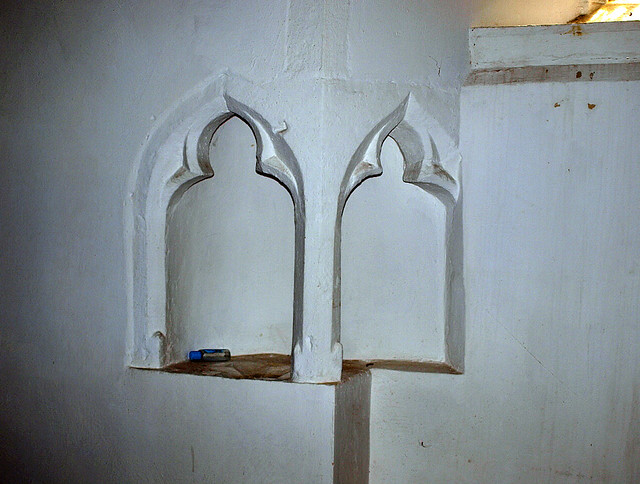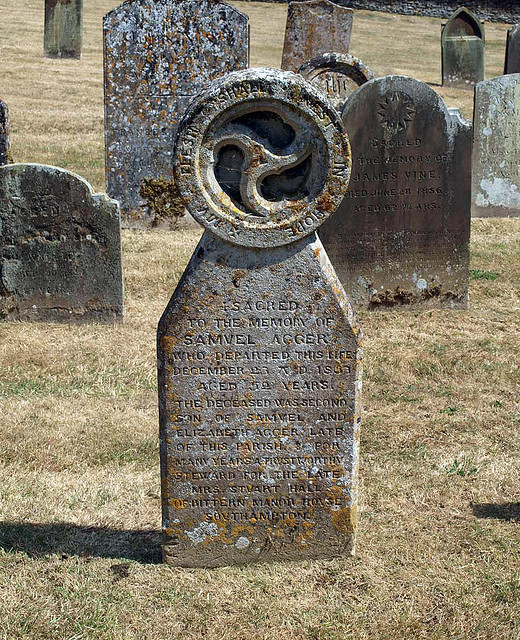ST MARY. Of carstone. Late C13 W tower, the bell-openings with Y-tracery. On the S side Y-tracery as well, but also large straight-headed Perp windows. Perp chancel arch with concave-sided polygonal responds, the outer details of the chancel all renewed. Niches l. and r. of the E window. Angle piscina inside a S window. N arcade and N aisle of 1868. Nave roof with fine heraldic cresting along the wall-plates. - STALLS. Some bench ends with poppy-heads re-used. - PLATE. Chalice and Paten, 1690; Paten and Flagon, 1702.
DENVER. The Fens are very near it. A rough road past the windmill points the way to them and leads to Denver Sluice, where the waters of this powerful and unaccommodating neighbour are kept in check. Sir John Rennie who built Waterloo Bridge constructed the powerful lock after weaker ones had failed, and, though it is not beautiful like the bridge, the bridge is gone while the Sluice endures. It is capable of discharging the waters from 800,000 acres of land in time of flood.
Denver Hall has a claim to beauty and to fame, for in the fine old brick house, with quaint patterned chimneys, turrets, stepped gables, dormers, and a many-windowed front, was born Captain George Manby, who went to school with Nelson and long survived him. Three years after Trafalgar he invented the rocket apparatus for use between ship and shore which has saved more sailors from wrecks than were lost in the battle. He sleeps in Hilgay churchyard. This is not the only gift that has come out of Denver, for Dr Robert Brady, Court Physician to Charles the Second, was born here, and bequeathed all his Denver estates to Gonville and Caius Colleges at Cambridge, of which he had been forty years Master.
A stone commemorates him in the church which stands near the hall. Its walls of dark rough stone are broken by the grey of 15th-century windows, and the 13th and 14th-century tower has had no spire since the great gale of 1895. The porch, like the rest of the old work, comes from late in the 15th century, but the sedilia and the piscina are 600 years old. On the small green outside is a cross in memory of the men who did not come back.
Denver Hall has a claim to beauty and to fame, for in the fine old brick house, with quaint patterned chimneys, turrets, stepped gables, dormers, and a many-windowed front, was born Captain George Manby, who went to school with Nelson and long survived him. Three years after Trafalgar he invented the rocket apparatus for use between ship and shore which has saved more sailors from wrecks than were lost in the battle. He sleeps in Hilgay churchyard. This is not the only gift that has come out of Denver, for Dr Robert Brady, Court Physician to Charles the Second, was born here, and bequeathed all his Denver estates to Gonville and Caius Colleges at Cambridge, of which he had been forty years Master.
A stone commemorates him in the church which stands near the hall. Its walls of dark rough stone are broken by the grey of 15th-century windows, and the 13th and 14th-century tower has had no spire since the great gale of 1895. The porch, like the rest of the old work, comes from late in the 15th century, but the sedilia and the piscina are 600 years old. On the small green outside is a cross in memory of the men who did not come back.



No comments:
Post a Comment